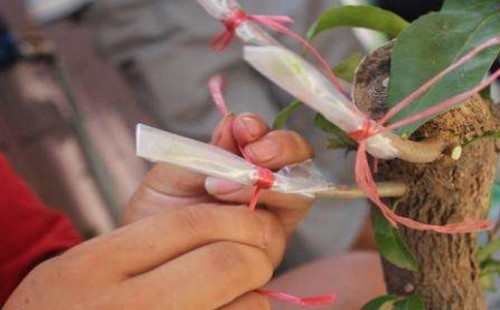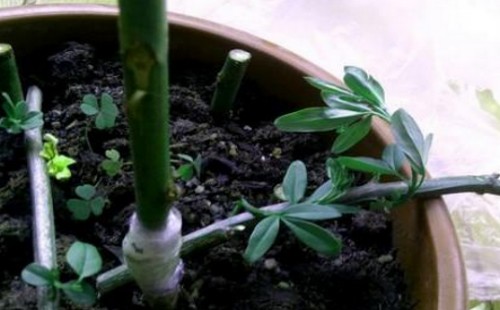Hydroponic culture technique of duck foot wood
Duck palm wood can not only soil basin, but also can be hydroponic, and as long as the scientific use of planting and breeding technology, it can also make it grow well, quite ornamental. The hydroponic culture of duck palm wood can usually be converted to hydroponic culture through water insertion and soil culture, but the most commonly used is the use of branch hydroponics and hydroponics. Next, the editor will introduce the technology of using water insertion to realize the hydroponic culture of duck palm wood.

First of all, the semi-lignified and leafed branches were cut from the adult trees as cuttings, and then they were cut into branches with a length of about 10 cm and more than 2 nodes as water cuttings. At the same time, 1-2 compound leaves were retained in the upper part of the cuttings, and all the lower leaves were removed to reduce water evaporation and nutrient consumption.
Next, insert the 2nd and 3rd part of the cuttings into a transparent glass container filled with clean or pure water. After the cuttings have been inserted, choose a bright and well-lit location to put them in the room. What needs to be done after that is to control the temperature and change the water frequently.
By keeping the temperature above 15 ℃ and changing water frequently, white wound healing tissue can be seen gradually at the base of the underwater part of the cuttings through the glass container in about 10 days. If you continue to raise it for a few days, you will find that the part begins to sprout adventitious buds. After about 50 days, the base of the branches used for water insertion basically grew new roots of about 6 cm in length, and the original whisker roots were as white as hair. At this point, we can return to the normal maintenance management process.
However, water insertion is often affected by climate and environment, so it is usually necessary to avoid water insertion in hot and hot summer, as well as in cold winter when the temperature is too low. In general, the temperature in spring and autumn is more suitable, and it is more suitable for water insertion to breed young plants of duck feet. And the temperature of these two seasons is also basically maintained between 15 ℃-25 ℃, which is very suitable for cuttings rooting and sprouting.
After the water insertion is successful, we should do the corresponding maintenance and management work in time. It is mainly to change water frequently, adjust the temperature at the same time, carry out proper illumination, and usually receive scattered light to meet the needs of growth. In addition, we also need timely pruning work, due to the rapid growth of duck foot wood, maintenance and management during the need to do a good job of pruning and shaping work. However, if the seedlings are planted in the soil with water, then it is necessary to choose an appropriate time to transplant them into the potted soil in time. As for maintenance and management, it is also mainly about light, temperature, water and fertilizer.
Time: 2019-06-07 Click:
- Prev

Grafting methods and matters needing attention of Prunus mume
Grafting is a common means of cultivating potted seedlings, which is often used in the cultivation of seedlings. The same is true of Prunus mandshurica. As a potted plant, grafting is often used to breed seedlings. However, the grafting of Prunus mandshurica can be divided into bud grafting and branch grafting. As long as the operation method is correct, it is relatively easy for grafting to survive.
- Next

Can primroses be cut? how to cut?
When it comes to the spring season, it is said that spring is the season for sowing, so can primroses reproduce in spring? The answer is yes. And many potted flowers and plants can breed young plants by cutting, so can primrose be cut? Usually
Related
- Fuxing push coffee new agricultural production and marketing class: lack of small-scale processing plants
- Jujube rice field leisure farm deep ploughing Yilan for five years to create a space for organic food and play
- Nongyu Farm-A trial of organic papaya for brave women with advanced technology
- Four points for attention in the prevention and control of diseases and insect pests of edible fungi
- How to add nutrient solution to Edible Fungi
- Is there any good way to control edible fungus mites?
- Open Inoculation Technology of Edible Fungi
- Is there any clever way to use fertilizer for edible fungus in winter?
- What agents are used to kill the pathogens of edible fungi in the mushroom shed?
- Rapid drying of Edible Fungi

